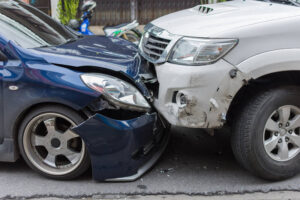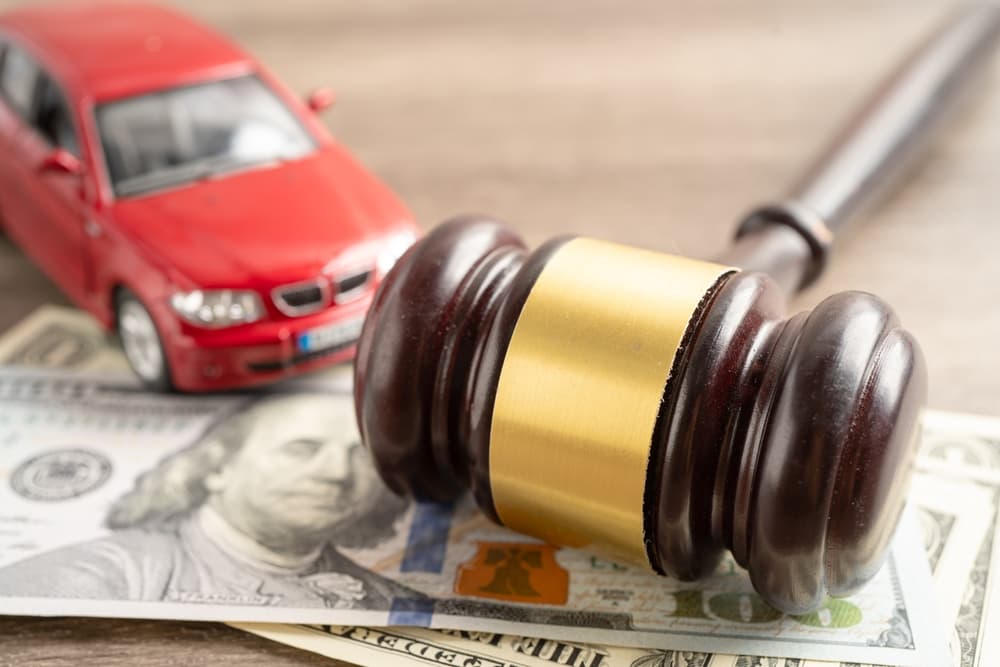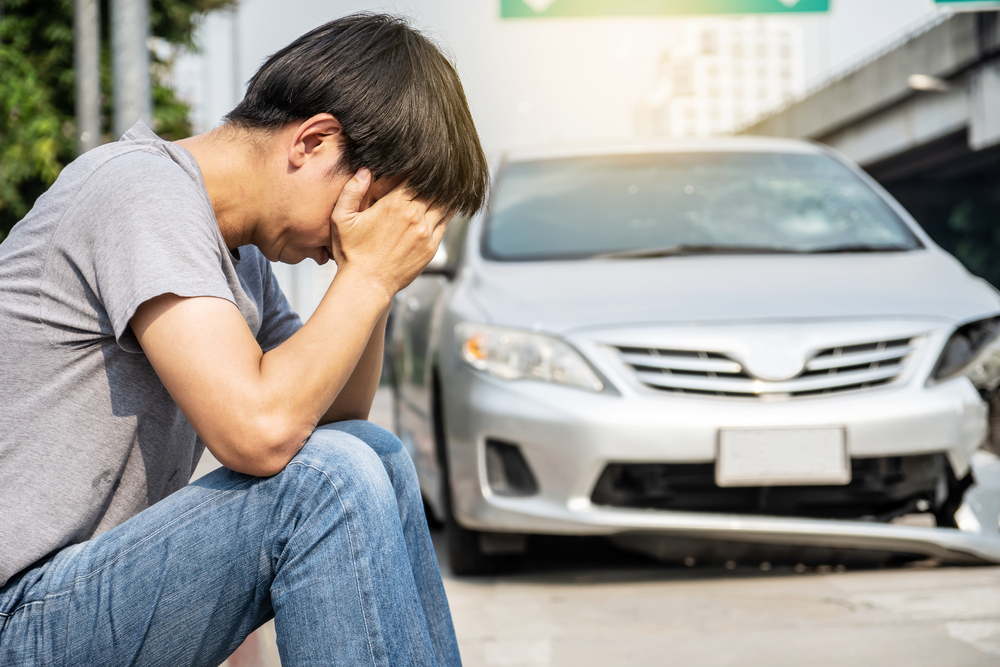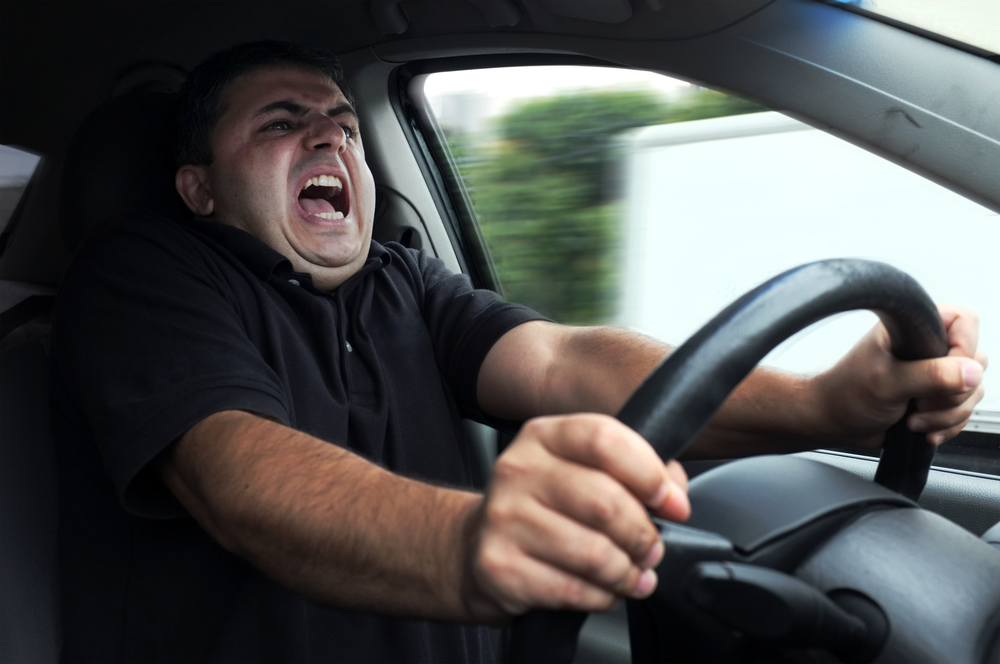Car accidents can occur at any moment and completely change your life. In one recent year, four people suffered an injury every minute in traffic accidents, with one person dying every 14 minutes. Often, motor vehicle accidents result in serious injuries and many costly losses, including medical bills, lost income, pain and suffering, and much more.
Motor vehicle accidents can happen in many ways, but certain types of collisions are more common and recognizable. The type of collision can often dictate the extent and severity of resulting injuries and how challenging the collision claim may be to navigate. There are also many causes of crashes, including preventable driver negligence.
If someone else changed your life by causing a crash and injuries, speak with a car accident lawyer immediately.
The Type of Motor Vehicle Accident Often Dictates the Outcome
Car accidents are not “one-size-fits-all.” Several factors can affect the way your accident occurs, including speed, location, and cause of the collision.
The exact details of your accident, including the type of collision, can heavily impact the outcome, meaning the injuries you sustain, the losses you experience, and the way your collision claim goes.
Injuries Depend on the Kind of Car Crash You Experience
The type of car accident you experience often significantly affects your resulting injuries.
For example, a rear-end collision might cause whiplash because the impact at the rear of the vehicle frequently causes the victim’s head and neck to whip front and back.
Collision injuries vary greatly but regularly include:
- Cuts and lacerations
- Broken bones
- Internal injuries
- Head injuries
- Traumatic brain injuries
- Neck injuries
- Back injuries
- Spinal cord injuries
- Internal injuries
- Soft tissue injuries
Your injuries can affect your accident claim; the more severe your injuries, the more compensation you typically require.
The More Severe Your Accident, The More Challenging Your Case
Some car accidents are less severe than others. You might settle your claim quickly and efficiently when your collision results in less significant injuries. However, when your car crash is more traumatic greater impact, worst injuries, more medical treatment—insurance companies may put up a fight.
While cases involving serious injuries and losses can be difficult to handle, no case is too tough for an experienced car accident lawyer. Therefore, after a collision, it’s important to consult with an attorney as soon as possible to receive insight and advice and better understand what you can expect from your collision claim.
How Do Car Accidents Happen?
The cause of a car crash can often dictate the type of car accident that results. The following are some of the most commonly recognized causes of vehicular accidents.
Aggressive Driving
Aggressive driving is an umbrella term for many dangerous driving behaviors. This type of driving stems from strong and uncontrolled emotions, including road rage.
Aggressive driving can include:
- Tailgating or following too closely
- Brake checking
- Cutting other drivers off
- Failure to obey traffic signs and lights
- Illegal driving on shoulders and sidewalks
While drivers often engage in aggressive driving to get to their destinations quicker or avoid traffic as much as possible, these driving behaviors can easily result in collisions.
Reckless Driving
Reckless driving is similar to aggressive driving. The primary difference is the definition. While every state has its own legal definition of reckless driving, it typically involves driving unsafely with little to no regard for the safety of other individuals and their property.
Driving recklessly means putting others at risk, including racing with other drivers, running red lights and stop signs, and disregarding school buses and areas with children.
In many states, reckless driving is considered a punishable crime.
Distracted Driving
Distracted driving means engaging in behavior that distracts you from the road. While many drivers think it is a skill to drive while multitasking, in reality, it can put them and others at risk for harm. Driving distractions are typically either manual, visual, or cognitive.
means engaging in behavior that distracts you from the road. While many drivers think it is a skill to drive while multitasking, in reality, it can put them and others at risk for harm. Driving distractions are typically either manual, visual, or cognitive.
Manual distractions are those that “manually” distract you from driving. These types of distractions regularly include eating and grooming while driving.
Visual distractions take your eyes off the road and surroundings. The most well-known visual distraction is texting and driving. Usually, drivers take their eyes away from the road for about five seconds at a time, but in those few seconds, you can drive the entire length of a football field if traveling at 55 miles per hour.
Finally, cognitive distractions are those that take your mind off of driving. Daydreaming is a common type of mental distraction, along with fatigue and feeling emotional.
Driving Under the Influence
Everyone knows the dangers of driving while under the influence of drugs or alcohol. Still, countless drivers engage in impaired driving on a daily basis. For this reason, about 32 people every single day in the United States die due to drunk drivers—about one person every 45 minutes.
When a person operates a vehicle while impaired, it is nearly impossible to drive safely and responsibly. This is why drunk driving is illegal in every state.
Fatigued Driving
While fatigued driving does not seem that serious of a driving error, it is actually more dangerous than most people realize. Surprisingly enough, fatigue can cause a similar impairment as drugs and alcohol, making fatigued driving almost like driving under the influence.
Several things can cause fatigue, like no sleep, little sleep, and time of day.
Failure to Yield
States have traffic laws concerning yielding. When you yield, you’re allowing another car or pedestrian to go ahead of you.
For example, failing to yield to oncoming traffic during a left turn is particularly dangerous. As you wait to turn, you must pay attention to oncoming traffic, pedestrians, and bicyclists crossing the road you’re turning into.
When drivers fail to yield as they should, others on the road are at risk of serious harm.
The Most Common Types of Motor Vehicle Accidents
After examining the most common causes of vehicular accidents, you can better understand the common types of collisions.
While car accidents can happen in almost any way imaginable, the following are some of the most common kinds of car crashes.
Rear End Accidents
Rear-end collisions involve a driver slamming into the back of the vehicle in front of them. These accidents happen most frequently due to following the vehicle in front too closely and distracted driving.
Determining and proving liability and fault for a rear-end crash is never straightforward. When in most cases, the rear driver causes rear-end collisions, it is not always the case. If you were the rear driver, you can hold the front driver liable for your losses, and you should discuss this with a car accident lawyer.
For example, brake checking often results in rear-end accidents. This dangerous driving behavior involves a driver slamming on their brakes to startle or scare the driver directly behind them. No matter the reason for doing it, brake checking is never acceptable.
In a situation involving brake checking, the rear driver may hit the vehicle in front, but not through their own fault. Therefore, the rear driver will need to prove the accident was actually caused by the driver in front, regardless of what the optics may suggest.
Head-On Collisions
Head-on collisions involve two vehicles moving toward each other and crashing. Because the two vehicles are typically moving at higher speeds at the time of head-on collisions, the force of the impact is much greater, resulting in serious damage and injury.
These crashes are usually associated with wrong-way accidents, meaning one vehicle mistakenly or negligently drives on the opposite side of the road and collides with a vehicle coming head-on.
T-Bone Accidents
T-bone accidents are given their name because of how the vehicles look after the crash. These kinds of accidents, also called side-impact collisions, involve a driver crashing into the side of another vehicle, creating a T shape.
Side impact collisions are most often caused by failure to yield or by running red lights and stop signs. For example, when a car goes to make a left turn without looking out for oncoming traffic, as they make their turn, a car may hit them on the side, resulting in a t-bone accident.
T-bone accidents are especially dangerous for the passengers on the side where the impact occurs. These collisions can easily result in broken bones and crush injuries if the impact is severe enough.
Sideswipe Collisions
Sideswipe collisions often result when two vehicles are traveling perpendicular to each other, and one driver hits the other on the side. These accidents most often occur when drivers attempt to merge or switch lanes without looking in their mirrors or their blind spots.
While the impact itself may not equal that in other accidents, the collision can cause one or both of the drivers to lose control of their vehicles and move into other lanes or off the road.
Rollover Accidents
Rollover accidents can happen under various circumstances and are more likely to cause substantial injury than other types of crashes. In a rollover accident, the impact of the collision, which can happen to any part of the vehicle, is strong enough that it causes a vehicle to flip over completely.
Vehicles may flip over once and land upside down, right-side up, or roll over several times before landing, depending on the situation and collision. Because of the traumatic rattling around in the vehicle, victims of rollover accidents are at risk of serious and life-threatening injuries and potential death.
Collisions Can Also Involve Stationary Objects and People
Car accidents don’t always involve other vehicles; they can also involve stationary objects and people.
Typically, accidents with objects and pedestrians can happen for all the same common causes as accidents with other vehicles.
Collisions with stationary objects, like barricades, walls, and trees, can be risky for the driver of the vehicle. In fact, about 20 percent of crash-related deaths involve accidents with stationary objects alongside the road.
Pedestrian accidents can also be devastating for the individual hit by a vehicle. Distracted driving, impaired driving, and failure to yield all regularly cause pedestrian accidents. Because pedestrians have no protection, injuries are severe, and death is common. In one recent year, 7,000 pedestrians in the United States died in pedestrian accidents.
No matter who (or what) is on the roadway, dangers are present every single day.
Car Accidents Involving Multiple Vehicles
Car accidents between vehicles don’t always involve only two cars. In many situations, multiple cars can be involved in a single accident.
Usually, when multiple cars are involved in an accident, the collision happens like a domino effect—one car hits another, and that accident causes another, and maybe even another.
Claims for multi-car accidents are especially tough to handle, as determining the root cause of the collision and fault is tricker.
After a Car Accident, Do Not Wait to Consult a Qualified Car Accident Lawyer

When you sustain injuries or damage after a car accident, do not hesitate to speak to a car accident attorney as quickly as possible. The sooner you begin working on your collision claim, the quicker your lawyer can create a legal strategy and start handling all necessary processes.
An experienced accident lawyer can handle your collision claim from inception to completion. Having a skilled lawyer on your side can give you invaluable peace of mind as you focus on what’s most important your health and recovery.
From investigating your accident, gathering important evidence, calculating your damages, and negotiating with the insurance company, you can rely on a personal injury law firm in New Port Richey to do it all for you. You can feel calm, comfortable, and confident knowing your collision claim is in capable hands.
Regardless of the type of accident you experience, a car accident attorney can help you.



